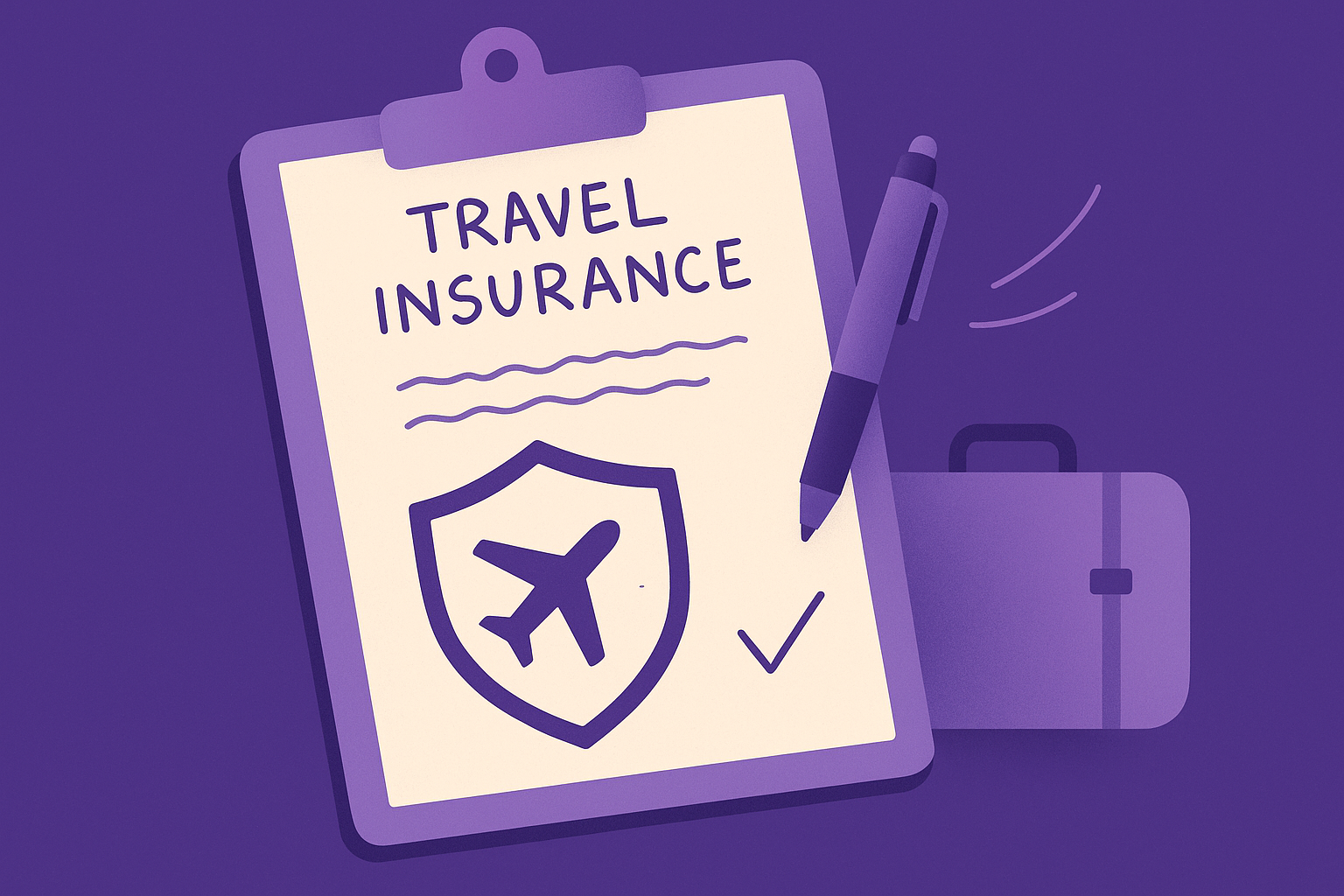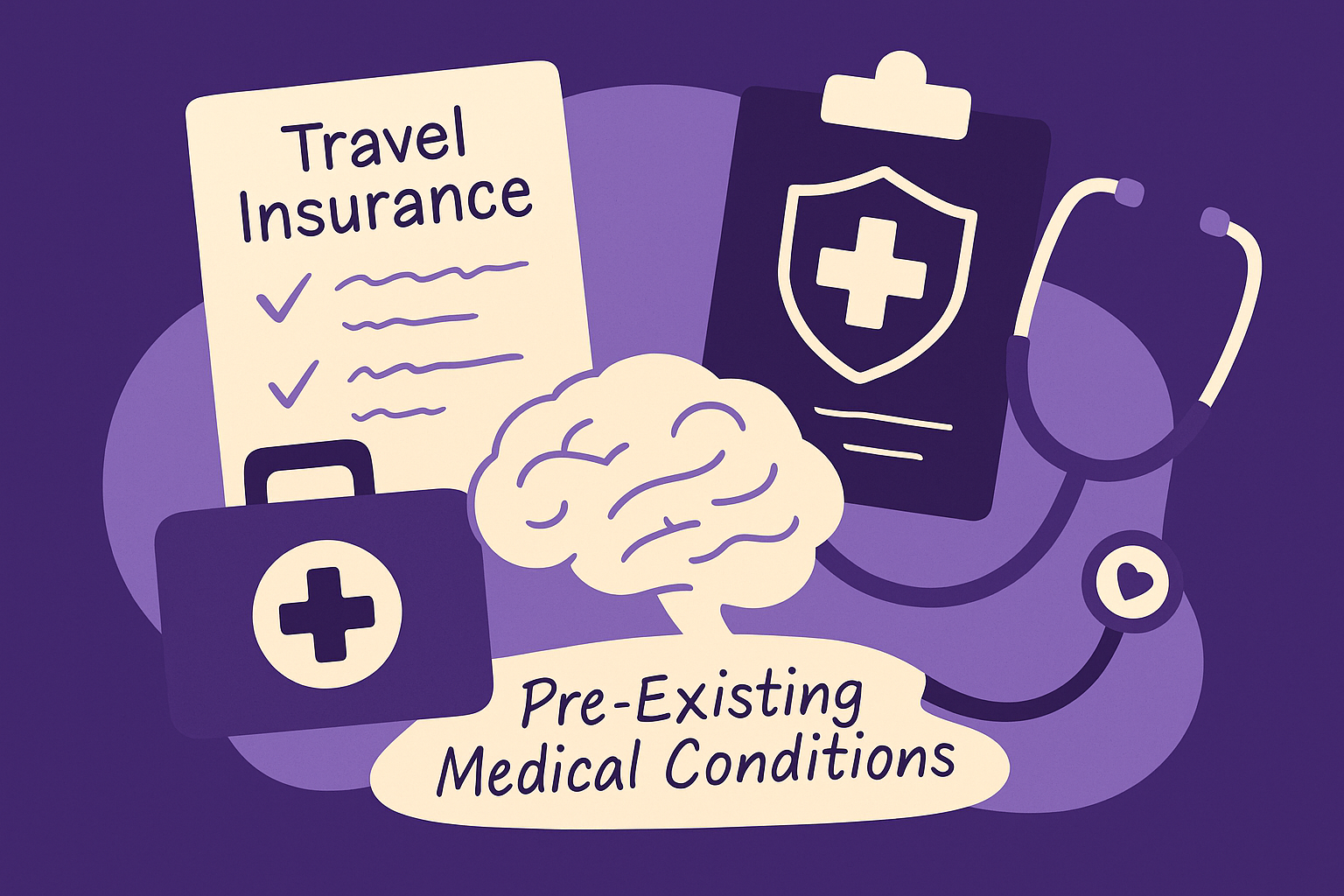Unexpected events can derail even the best-planned trips. Flight cancellations, medical emergencies abroad, lost luggage, and sudden family crises cost travelers thousands in non-refundable expenses every year. Travel insurance protects your investment and provides crucial support when things go wrong. This guide explains what travel insurance covers, how much it costs, and how to find the best policy through comparison sites.
What Does Travel Insurance Cover?
Travel insurance typically covers five main areas: trip cancellation, medical emergencies, baggage protection, travel delays, and emergency evacuation. Trip cancellation reimburses non-refundable expenses if you can’t travel due to covered reasons like illness, injury, or family emergencies. Medical coverage pays for healthcare costs abroad, which your regular health insurance often won’t cover. Baggage protection compensates you for lost, stolen, or damaged luggage, while delay coverage reimburses meals and accommodations when flights are significantly postponed.
Comprehensive policies bundle all these protections together. Emergency medical evacuation coverage transports you to adequate medical facilities if local care isn’t sufficient, which can cost over $100,000 without insurance. Most policies also include 24/7 travel assistance services that help with medical referrals, lost passports, and emergency cash transfers.
The specific coverage limits vary widely by policy. Medical coverage might range from $50,000 to $500,000 depending on your destination and policy tier. Trip cancellation typically covers up to the total trip cost you insured. Understanding these limits helps you choose adequate protection without overpaying for coverage you don’t need.
Is Travel Insurance Worth It?
Travel insurance is worth it when the cost of potential losses outweighs the premium you’ll pay. For a $5,000 international trip, insurance typically costs $200-$500 (4-10% of trip cost). If you cancel due to illness or face a medical emergency abroad, you could lose the entire trip investment plus incur thousands in medical bills.
The value equation changes based on several factors. Travelers booking expensive trips with non-refundable deposits benefit most from trip cancellation protection. International travelers need medical coverage since Medicare and many health plans don’t cover care outside the United States. Older travelers and those with health concerns face higher risks that make insurance particularly valuable.
You might skip travel insurance for short domestic trips where you can drive home easily, inexpensive trips where you could afford to lose the cost, or when you have flexible, refundable bookings. Credit cards sometimes provide basic trip cancellation coverage, though it’s usually secondary coverage with significant limitations. Calculate your potential loss if something goes wrong, then compare that to the insurance premium. For most international trips and expensive vacations, the protection justifies the cost.
What’s Typically Not Covered by Travel Insurance?
Travel insurance won’t cover events you knew about when buying the policy. If a hurricane is already tracking toward your destination when you purchase insurance, canceling due to that specific storm won’t be covered. Pre-existing medical conditions are also excluded unless you buy a policy with a pre-existing condition waiver, which typically requires purchasing within 14-21 days of your initial trip deposit.
Most policies exclude high-risk activities like skydiving, scuba diving below certain depths, or mountaineering unless you buy additional adventure sports coverage. Travel to countries under government travel warnings often isn’t covered. Changes of mind don’t qualify for standard trip cancellation—you need expensive Cancel For Any Reason (CFAR) coverage for that flexibility.
Financial defaults by tour operators, cruise lines, or airlines you booked directly with are commonly excluded. Alcohol or drug-related incidents void most claims. Normal pregnancy and childbirth aren’t covered, though unexpected complications usually are. Always read the policy exclusions carefully before assuming you’re protected.
How Much Is Travel Insurance?
Travel insurance costs between 4% and 10% of your total trip cost for comprehensive coverage. A $3,000 trip typically costs $120-$300 to insure, while a $10,000 international vacation might cost $400-$1,000. Your actual price depends on four main factors: trip cost, traveler age, destination, and trip duration.
Age significantly impacts pricing because older travelers face higher medical risks. A 30-year-old might pay $150 to insure a $3,000 trip, while a 70-year-old could pay $250-$350 for identical coverage. International destinations, especially those with expensive healthcare systems, cost more to insure than domestic trips.
Trip duration also matters—longer trips cost more because you’re exposed to risk for more days. Medical-only policies cost less than comprehensive coverage since they exclude trip cancellation protection. Annual travel insurance, which covers multiple trips within a year, costs $200-$600 depending on coverage limits and can save money if you take three or more trips annually.
To get accurate quotes, use travel insurance comparison sites that show prices from multiple providers simultaneously. Small differences in trip details can significantly affect costs, so enter your information precisely when comparing.
How to Get Cheap Travel Insurance (Without Sacrificing Coverage)
The most effective way to reduce travel insurance costs is shopping through comparison sites rather than buying the first policy you find. Comparison platforms like Squaremouth, InsureMyTrip, and Compare the Market show quotes from dozens of insurers side-by-side, making it easy to identify the best value. Prices for identical coverage can vary by 30-50% between providers.
Customize your coverage to match your actual needs instead of buying maximum protection across the board. If you’re traveling domestically, you might only need medical evacuation and trip interruption coverage since your health insurance likely works nationwide. Young, healthy travelers can often choose lower medical coverage limits. Skip expensive add-ons like Cancel For Any Reason unless you genuinely need that flexibility.
Buy your policy soon after making your first trip deposit. Early purchase not only activates pre-existing condition waivers but sometimes qualifies you for early-bird discounts. Consider annual travel insurance if you take multiple trips yearly—it typically breaks even at three trips and saves substantially for frequent travelers.
Increase your deductible to lower premiums if you can afford higher out-of-pocket costs. Some insurers offer discounts for families or groups booking together. Money Saving Expert recommends excluding coverage you already have elsewhere, like baggage protection if your credit card provides it, to reduce redundant costs.
Annual Travel Insurance vs. Single-Trip Coverage
Single-trip travel insurance covers one specific journey with defined departure and return dates. You buy it for each vacation, cruise, or international trip separately. Annual travel insurance (also called multi-trip insurance) covers unlimited trips within a 12-month period, though each trip typically has a maximum duration of 30-45 days.
Annual policies make financial sense when you travel three or more times per year. A single comprehensive policy for a $4,000 trip might cost $200-$280. Three such trips would cost $600-$840 in separate policies. An annual policy covering the same traveler typically costs $400-$600, saving $200-$240 while covering any additional trips you take.
The trip duration limit is the main restriction. If you’re planning one extended three-month journey, single-trip insurance is your only option. But for business travelers, cruise enthusiasts, or people who take multiple shorter vacations, annual coverage provides better value and convenience. You don’t need to remember to buy insurance before each trip—you’re automatically covered once you purchase the annual policy.
Compare both options through travel insurance comparison sites when you have multiple trips planned. Enter your travel frequency and typical trip costs to see accurate annual policy quotes alongside single-trip options.
Medical Travel Insurance: What You Need to Know
Medical travel insurance focuses specifically on healthcare costs and emergency medical evacuation while traveling, often excluding trip cancellation and baggage protection. This coverage is crucial for international travel because Medicare doesn’t cover care outside the United States, and many private health plans provide limited or no international coverage.
Emergency medical coverage pays for doctor visits, hospital stays, prescription medications, and emergency dental care abroad. Policies typically offer $50,000 to $500,000 in medical coverage. For destinations with expensive healthcare like Europe, Japan, or Australia, choose higher limits. Emergency medical evacuation coverage, usually $100,000-$500,000, pays to transport you to adequate medical facilities or home if local care is insufficient.
When comparing medical travel insurance, check whether it provides primary or secondary coverage. Primary medical coverage pays first without requiring you to file through your regular health insurance. Secondary coverage only pays after your health insurance has processed the claim, which can be complicated for international care. Companies like Allianz, Travel Guard, and World Nomads offer standalone medical travel insurance policies that cost less than comprehensive plans since they focus solely on health-related risks.
Pre-existing medical conditions typically aren’t covered unless you purchase a policy with a pre-existing condition waiver within the specified time window after making your initial trip deposit. This waiver allows coverage for conditions that existed before you bought the policy, which is essential for travelers managing chronic conditions.
Best Travel Insurance Comparison Sites
Travel insurance comparison sites let you view quotes from multiple insurance providers simultaneously, saving hours of research. These platforms don’t sell insurance directly—they aggregate policies from major insurers and earn commissions when you purchase through their site. Using comparison sites ensures you see competitive pricing and can easily compare coverage details side-by-side.
Squaremouth is one of the most comprehensive comparison platforms, featuring policies from over 30 travel insurance companies including Allianz, AIG Travel Guard, Nationwide, and Seven Corners. Their Zero Complaint Guarantee ensures featured insurers maintain high customer service standards. Squaremouth’s comparison tools let you filter by coverage type, price, provider rating, and specific benefits. Their customer service team can help explain policy differences without pressure to buy a specific plan.
InsureMyTrip offers similar comparison functionality with 25+ insurance providers and adds their Anytime Advocates service—licensed insurance agents available 24/7 to help with claims issues and coverage questions after purchase. Their comparison tool highlights which policies include specific features like Cancel For Any Reason coverage or adventure sports protection. InsureMyTrip also provides customer reviews of insurers, helping you choose companies with good claim payment histories.
Compare the Market (popular in the UK) compares travel insurance across multiple providers with a focus on price transparency and coverage clarity. They break down exactly what each policy covers and highlight exclusions prominently.
Money Saving Expert provides detailed travel insurance comparison guidance alongside quotes, explaining industry tricks and how to avoid overpaying for coverage you don’t need.
When using comparison sites, enter identical trip details across platforms to ensure accurate price comparisons. Pay attention to coverage limits and deductibles, not just the premium price. The cheapest policy might have lower medical coverage or higher out-of-pocket costs that make it a worse value overall.
Understanding ‘Doubling Up’ on Travel Insurance
Doubling up on travel insurance means having overlapping coverage from multiple sources—typically from a standalone policy plus credit card travel benefits. While it might seem like extra protection, most insurance policies include coordination of benefits clauses that prevent you from collecting more than your actual loss from multiple insurers.
Many premium credit cards like the Chase Sapphire Reserve, American Express Platinum, or Capital One Venture X include travel insurance benefits when you use the card to pay for your trip. These benefits typically provide secondary trip cancellation coverage (usually up to $5,000-$10,000 per person), trip interruption protection, baggage delay reimbursement, and sometimes limited emergency medical coverage.
The problem with relying solely on credit card coverage is that it’s almost always secondary, meaning you must file claims through your primary insurance first. Coverage limits are often lower than standalone policies provide. Credit card policies may exclude common scenarios or have stricter documentation requirements. Most don’t cover pre-existing conditions or offer Cancel For Any Reason flexibility.
Buying a standalone travel insurance policy when you already have credit card coverage isn’t necessarily doubling up wastefully. If you purchase a policy with primary coverage, it pays first, and your credit card benefits serve as backup for expenses exceeding the primary policy limits. The key is understanding what your credit card actually covers, then filling gaps with a standalone policy rather than paying for redundant protection. Compare your credit card benefits carefully against standalone policy offerings before deciding.
When to Buy Travel Insurance (Timing Matters)
The best time to buy travel insurance is within 14-21 days of making your initial trip deposit. This narrow window activates time-sensitive benefits that aren’t available if you wait longer. The pre-existing condition waiver, which covers medical conditions that existed before you bought insurance, requires purchase within this timeframe at most insurers.
Cancel For Any Reason (CFAR) coverage, which refunds 50-75% of prepaid trip costs if you cancel for reasons not otherwise covered, also requires purchase within 10-21 days of your first trip payment. Booking early also protects your investment immediately—if something happens between booking and departure, you’re covered for the full trip cost.
You can buy travel insurance anytime before your departure date, but waiting means forgoing these valuable protections. If you book a trip six months in advance and wait five months to buy insurance, you won’t have coverage if you need to cancel during those five months. Trip cancellation insurance doesn’t cover events that already occurred when you purchased the policy.
Some travelers wait to see if weather or political situations develop before buying insurance, but this strategy backfires. Once a hurricane forms or civil unrest begins, insurers exclude those specific events from new policy purchases. Buy insurance immediately after booking, then adjust or cancel the policy during the free look period (usually 10-15 days) if your travel plans change. Most insurers offer full refunds if you cancel during this review window and haven’t filed any claims.
FAQ
Does travel insurance cover trip cancellation for any reason?
Standard travel insurance only covers trip cancellation for specific reasons like illness, injury, death of a family member, severe weather, or jury duty. Cancel For Any Reason (CFAR) coverage lets you cancel for reasons not otherwise covered and receive 50-75% of your prepaid trip costs back. CFAR costs 40-60% more than standard policies and must be purchased within 10-21 days of your initial trip deposit.
Can I buy travel insurance after booking my trip?
Yes, you can purchase travel insurance anytime before departure, but buying within 14-21 days of your first trip payment is crucial. This window activates pre-existing condition waivers and Cancel For Any Reason coverage at most insurers. Waiting also means you’re unprotected if something happens between booking and when you finally buy insurance.
Does travel insurance cover COVID-19?
Most travel insurance policies now cover COVID-19 like any other illness for trip cancellation and medical coverage, but there are important exclusions. If travel advisories or border closures are already in effect when you purchase your policy, canceling due to those specific situations won’t be covered. Cancel For Any Reason coverage provides the most flexibility for pandemic-related concerns.
What is emergency medical evacuation?
Emergency medical evacuation coverage pays to transport you to the nearest adequate medical facility or home if local care where you’re traveling is insufficient for your medical emergency. This can cost $50,000-$150,000 or more without insurance. Evacuation coverage typically provides $100,000-$500,000 in protection and includes medical escort services if needed.
Do I need travel insurance for domestic trips?
Domestic travel insurance makes sense if you have significant non-refundable expenses or limited flexibility in your health insurance. Your regular health insurance likely covers medical care nationwide, so focus on trip cancellation and interruption protection. Short road trips with minimal prepaid costs often don’t justify insurance premiums, but expensive domestic cruises or all-inclusive resort packages do.
How do I file a travel insurance claim?
Contact your insurance provider’s 24/7 claims line as soon as possible after the incident occurs. Gather documentation including receipts, medical reports, flight cancellation notices, police reports for theft, or death certificates for family emergencies. Submit your claim with all required documentation within the timeframe specified in your policy (usually 30-90 days). Most insurers process straightforward claims within 2-4 weeks.




